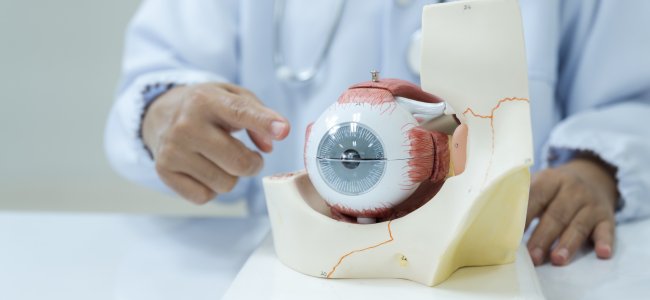Hemianopsia lenses: a replacement approach

The editorial staff of Emianopsia.com is pleased to propose the interview to Dr Lepri: graduated in ophthalmology at the University of Pisa, over the years he has been mainly interested in anterior segment surgery, regarding refractive surgery, ophthalmology surgery and ocular appendages, Basedow’s ophthalmology, and pediatric ophthalmology.
Before starting a short video published by Giuseppe Toffoli that simulates the vision through prismatic lenses.
Dr Lepri, can you tell our readers about your experience with this type of symptomatology (hemianopsia) and its patients: what are the clinical cases in which, more frequently, this deficiency occurs?
“Hemianopsia is the amputation of part of the visual field, given by lesions at the level of the central nervous system, and can be linked to various pathologies including thrombosis, stroke, aneurysms, intracranial expansive processes and ischemia.
During my career, the hemianoptic patients I met were veterans of various pathologies, especially pituitary adenomas. The most frequent hemi-psychotic defect was the bitemporal hemianopsia, in which the loss of the visual field appears to be at the temporal level of both hemiretinas: the consequence of this is the loss of peripheral vision. Then follow all the other hemianopsias”.
Hemianopsia shows a, undoubtedly peculiar, symptomatology but it can hide pitfalls during the diagnosis process (it may be difficult to make a distinction with neglect). Can you explain to us how the diagnosis is carried out and what are the signs that assimilate the visual deficit to the hemianopsia?
“Neglect, or unilateral spatial negligence (NSU), is a deficit of perception and is part of attention disorders: there is, therefore, a deficit of the perception of stimuli of the counter-lesioned hemiampus at various levels, that is, body or space, which also involves less use of the extremities of the contralateral hematoma.
The main symptoms of visual neglect are:
- Reduction of the ability to actively explore the contralateral hemisphere to the lesion.
- The reduced tendency to respond to stimuli from the contralateral space to the lesion.
It can be a consequence of:
- Trauma
- Trauma
- Cerebral haemorrhages
- Intracranial expansive processes, including neoplasms involving the right parietal lobe, posterior cerebral artery, or middle cerebral, thalamus, basal ganglia, or frontal lobe.
Unlike hemianopsia, where there is an obstacle to the propagation of stimuli in the visual path, in the case of neglect, visual information goes through all the visual pathways and undergoes normal processing, but does not reach the level of consciousness. For the diagnosis of neglect, standardized neuropsychological tests are used, while in the hemianopsia the examination of the visual field associated with various investigations such as magnetic resonance and CT are used.
It is also important to remember that awareness of the deficit is absent in hemi-negligence, whilst it is present in hemianopsia.”
Can you tell us what are the differences, merits and defects that characterize the various approaches aimed at recovery from hemianopsia (for example neuro-rehabilitative approach, using optical aids such as lenses for hemianopsia)?
“The various approaches aimed at the recovery of hemianopsia are characterized by merits and defects that can be considered partly subjective, also according to the patient’s expectations; For this reason, it is important to have thorough communication with this type of patient. Rehabilitation treatment consists in educating the patient towards orientation and mobility techniques, adapting the remaining visual skills to different situations, or trying to increase the responses to these deficits.
Prismatic lenses fail to increase the extent of the field of view but induce a shift of the visual zone in a “more central direction”.
The neurorehabilitation process is aimed at increasing in the patient to the saccade movements, that is, the response time to visual stimuli through audio-visual stimuli.”
Can you tell us how it is used to treat cases of hemianopsia and what are your preferences concerning the various types of approaches?
“I usually prefer to treat hemianopsia with classic optical aids, including prismatic lenses. However, I believe that it is very important to look for innovative methods of rehabilitation, even when not in person (linked to telemedicine), that can also promote the patient’s independence and tranquillity in undergoing rehabilitation.“
We thank Dr Lepri for his availability and for sharing his experience in the field. To learn more about the benefits of this socio-cultural revolution you can read our article Digital revolution in healthcare: all the advantages.

You are free to reproduce this article but you must cite: emianopsia.com, title and link.
You may not use the material for commercial purposes or modify the article to create derivative works.
Read the full Creative Commons license terms at this page.










